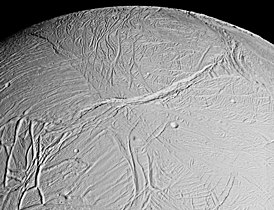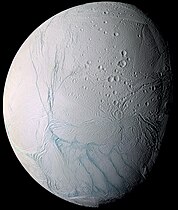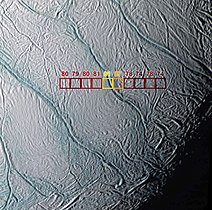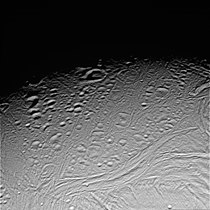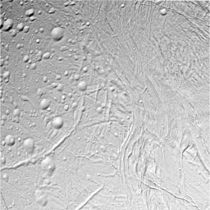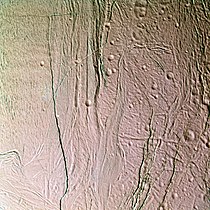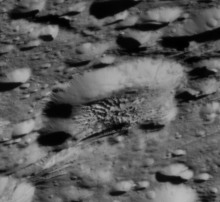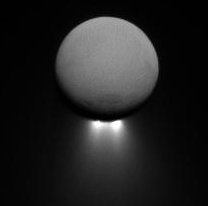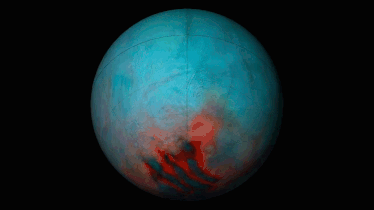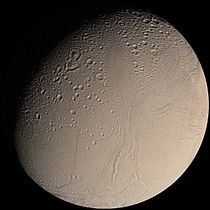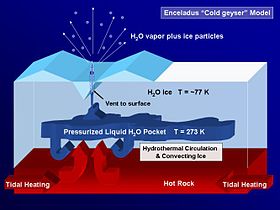Enceladus
Jump to navigation
Jump to search
- If you are looking for the mythological giant Enceladus, please see: Category:Gigantomachy.
English: Enceladus (en-sel'-a-dus, Greek Εγκέλαδος) is a moon of Saturn discovered in 1789 by William Herschel.
Hrvatski: Enkelad (Enceladus) je mjesec Saturna otkriven 1789. od strane Williama Herschela.
Deutsch: Enceladus (en-sel'-a-dus, griechisch Εγκέλαδος) ist ein Mond des Saturn, der im Jahr 1789 von William Herschel entdeckt wurde.
Nederlands: Enceladus (en-sel'-a-dus, Grieks Εγκέλαδος) is een maan van Saturnus die in 1789 door William Herschel ontdekt werd.
Cassini images
[edit]-
E-ring
-
approach
-
Mosaic of four high resolution images taken by Cassini
-
Full-disk view of the anti-Saturn hemisphere on Enceladus
-
Full-disk view of the anti-Saturn hemisphere on Enceladus (high resolution)
-
Saturn facing side
-
This image shows the warmest places in the south polar region of Enceladus.
-
Degraded craters on Enceladus
-
Samarkand Sulci
-
Enceladus surface in False Color
-
Enceladus is only 505 kilometers (314 miles) across, small enough to fit within the length of the United Kingdom
-
Tectonic features and crater degradation styles
-
High-resolution mosaic of Enceladus' surface, showing several tectonic and crater degradation styles
-
Dalilah crater on Enceladus
-
Enceladus perhaps has rolled its active region to the South Pole.
-
Fountain-like sources of the fine spray of material that towers over the south polar region
-
Enceladus and South Polar jets (13 April 2017).
Voyager images
[edit]-
Voyager 2 color image of Enceladus
Other
[edit]-
The model shows how proposed underground reservoirs of pressurized liquid water above 273 degrees Kelvin (0 degrees Celsius) could fuel geysers that send jets of icy material into the skies above the moon's south pole.
-
The orbit of Enceladus around Saturn, showing its position among Saturn's inner moons.
-
High-resolution, false-color view of "tiger stripe" fractures in the south polar region of Saturn's moon Enceladus withEnglish: brightness temperatures from the CIRS instrument overlain.



